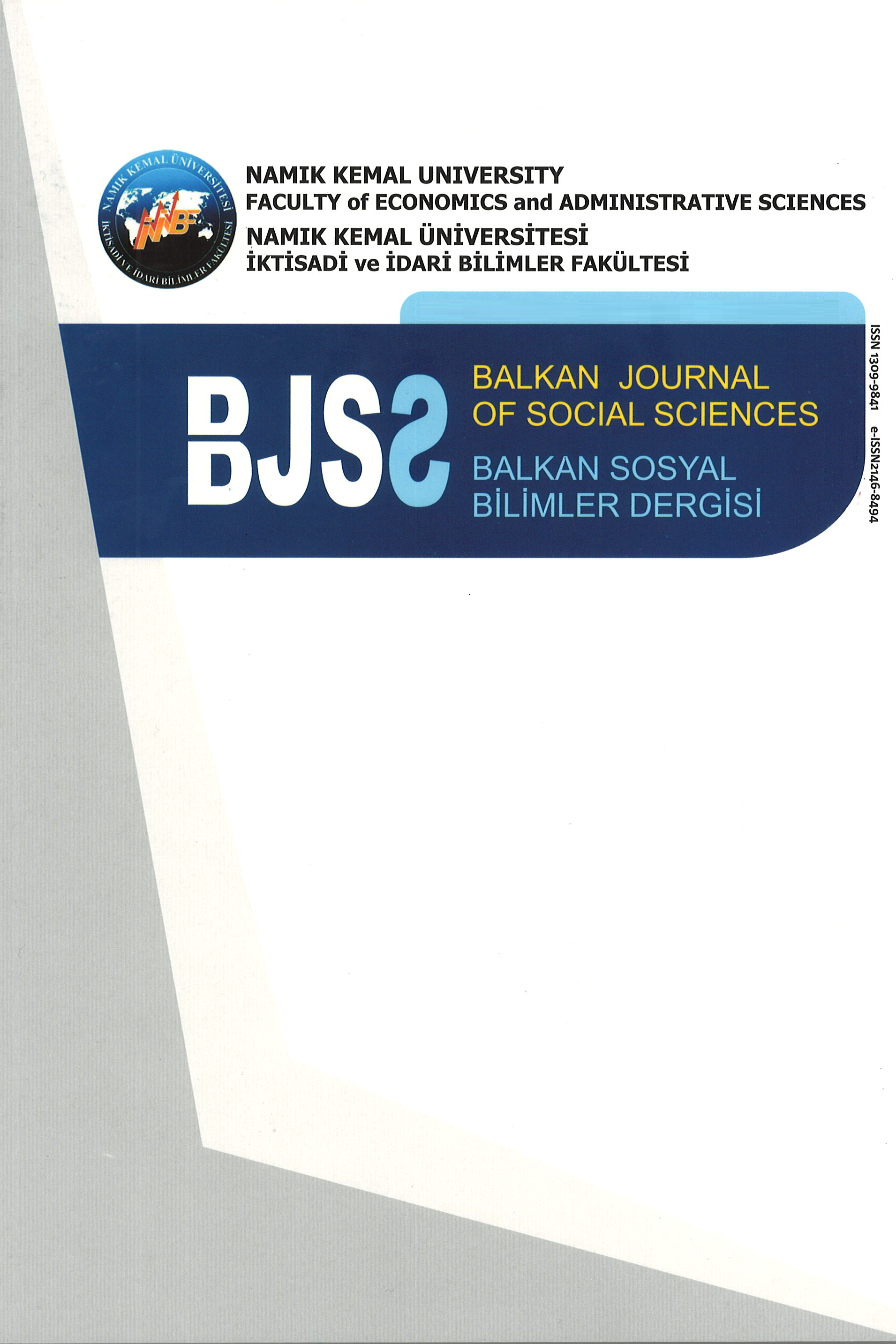ALLAH ALGISI ÖLÇEĞİ TÜRKÇE FORMUNUN GEÇERLİK VE GÜVENİRLİĞİ
Bu araştırmanın amacı Allah Algısı Ölçeği’nin (AAÖ; Halstead & Hautus, 2013) Türkçe formunun geçerlik ve güvenirliğini incelemektir. Araştırma 360 üniversite öğrencisi üzerinde yürütülmüştür. Doğrulayıcı faktör analizinde 16 maddeden ve iki boyuttan (Allah sevgisi ve koşullu Tanrı algısı) oluşan modelin iyi uyum verdiği görülmüştür (x²= 264.43, sd= 97, RMSEA= .069, CFI= .91, IFI= .91, NFI= .85, RFI= .82, GFI= .92, SRMR= .069). Ölçeğin iç tutarlılık güvenirlik katsayıları Allah sevgisi alt boyutu için .83, Koşullu Tanrı algısı alt boyutu için .56 ve ölçeğin bütünü için .67 olarak bulunmuştur. Ölçeğin faktör yükleri .27 ile .77, düzeltilmiş madde toplam korelasyon katsayıları ise .10 ile .68 arasında sıralanmaktadır. Bu sonuçlar ölçeğin Türkçe formunun geçerli ve güvenilir bir ölçme aracı olduğunu göstermektedir.
Anahtar Kelimeler:
Allah algısı, Geçerlik, Güvenirlik, Doğrulayıcı faktör analizi
THE VALIDITY AND RELIABILITY OF TURKISH VERSION OF THE PERCEPTIONS OF GOD SCALE
This study investigated the validity and reliability of the Turkish Version of the Perceptions of God Scale (PGS; Halstead & Hautus, 2013). Participants were 360 university students. Results of confirmatory factor analysis demonstrated that the 16 items loaded on two factors (loving god, conditional god) and the two-dimensional model was well fit (x²= 264.43, df= 97, RMSEA= .069, CFI= .91, IFI= .91, NFI= .85, RFI= .82, GFI= .92, SRMR= .069). Internal consistency reliability coefficients were .83 for loving god subscale, .56 for conditional god, and .67 for overall scale. The corrected item-total correlations of PGS ranged from .10 to .68. Factor loadings ranged from .27 to .77. These results demonstrate that this scale is a valid and reliable instrument.
Keywords:
Perceptions of God, Validity, Reliability, Confirmatory factor analysis,
___
- Akın, A., Akın, Ü., Adam Karduz, F. F., Kaya, Ç., Demir, D., Özbay, A., Yıldız, B., & Ercengiz, M. (2014, May). The validity and reliability of the Turkish version of the Religious Activities Scale. Paper presented at the 2nd International Conference on Ethics Education, May, 21-23, Ankara, Turkey.
- Ay, M. E. (1993). Çocuklarımıza Allah’ı nasıl anlatalım. İstanbul: Timaş Yayınları. Ayten, A. (2010). Psikoloji ve din -psikologların din ve Tanrı görüşleri. İstanbul: İz Yayıncılık.
- Benson, P., & Spilka, B. (1973). God Image as a function of self-esteem and locus of control. Journal for the Scientific Study of Religion, 12, 297-310.
- Birky, L. T., & Ball, S. (1988). Parental trait influence on God as an object representation. Journal of Psychology, 122, 133-137.
- Braam, A. W, Hanneke, S. J., Bianca, M., Dineke, R., & Aartjan, T. F. (2008). God image and mood in old age: Results from a community based pilot study in the Netherlands. Health, Religion & Culture, 11(2), 221-237.
- Cavanagh, M. (1992). The perception of God in pastoral counseling. Pastoral Psychology, 41(2), 75-87.
- Cecero, J. J., Marmon, T. S., Beitel, M., Hutz, A., & Jones, C. (2004). Images of mother, self, and God as predictors of dysphoria in non-clinical samples. Personality and Individual Differences, 36, 1669-1680.
- Flakol, D. A. (October, 1974). Self-esteem, psychological adjustment, and images of God. Paper presented at the 1974 Convention of the Society for the Scientific Study of Religion, October, 6, Washington.
- Gazali. (1974). İhyâu ulûmi’d dîn. (çev., Serdaroğlu, A.). İstanbul: Bedir Yayınevi.
- Güler, Ö. (2007). Tanrı’ ya yönelik atıflar, benlik algısı ve günahkarlık duygusu (yetişkin örneklem). (Yüksek lisans tezi). Ankara Üniversitesi Sosyal Bilimler Enstitüsü, Ankara.
- Halstead, P. J., & Hautus, M. (2013). Defending the God beyond: The development of the a God-scale- a new ınstrument for the assessment of people's perceptions, experiences, and activities in relationship to God- and ıts ınitial use in a forgiveness study. Journal of Spirituality in Mental Health, 15, 160-185.
- Hayta, A. (2006). Anneden Allah’a: Bağlanma teorisi ve İslâm’da Allah tasavvuru. Değerler Eğitimi Dergisi, 4, 29- 63.
- Hu, L. T., & Bentler, P. M. (1999). Cut-off criteria for fit indexes in covariance structure analysis: Conventional criteria versus new alternatives. Structural Equation Modeling, 6, 1-55.
- Joreskog, K. G., & Sorbom, D. (1996). LISREL 8 reference guide. Lincolnwood IL: Scientific Software International.
- Marsh, H. W., Balla, J. R., & McDonald, R. P. (1988). Goodness-of-fit indexes in confirmatory factor analysis: The effect of sample size. Psychological Bulletin, 103, 391-410.
- Marsh, H. W., & Hocevar, D. (1988). A new more powerful approach to multitrait‐multimethod analyses: Application of second‐order confirmatory factor analysis. Journal of Applied Psychology, 73, 107‐117.
- Schaap, J. H., Elisabeth, E. B., Piet, J. V., & Hetty, Z. (2002). Image of God and personality pathology: An exploratory study among psychiatric patients. Mental Health Religion & Culture, 5(1), 55-71.
- Tabachnick, B. G., & Fidell, L. S. (2007). Using multivariate statistics. Boston: Allyn and Bacon.
- Tezbaşaran, A. A. (1996). Likert tipi ölçek geliştirme kılavuzu. Ankara: Türk Psikologlar Derneği Yayınları.
- Topaloğlu, B. (1992). İslam kelamcılarına ve filozoflarına göre Allah’ın varlığı. Ankara: Diyanet İşleri Başkanlık Yayınları.
- Vergote, A. (1999). Din, inanç ve inançsızlık. (Çev. Uysal, V.). İstanbul: Marmara Üniversitesi İlahiyat Fakültesi Yayınları.
- http://en.wikipedia.org/wiki/God_in_Christianity
- Yayın Aralığı: Yılda 2 Sayı
- Başlangıç: 2011
- Yayıncı: Tekirdağ Namık Kemal Üniversitesi
Sayıdaki Diğer Makaleler
NGUGI WA THIONG’O TARAFINDAN YAZILAN MATİGARİ ‘DEKİ YERLİ SEÇKİNLER
YAKINSAMA HİPOTEZİ: BALKAN ÜLKELERİ ÖRNEĞİ
Özge Bariş TÜZEMEN, Samet TÜZEMEN
AVRUPA BİRLİĞİ VE İZMİR İŞGÜCÜ PİYASALARI: TOPLUMSAL CİNSİYET AÇISINDAN BİR DEĞERLENDİRİLME
Davuthan GÜNAYDIN, Hakan CAVLAK
TÜTÜN TÜKETİMİNİN EKONOMİK ETKİLERİ VE TÜTÜN KONTROL POLİTİKALARI ÜZERİNE BİR İNCELEME
